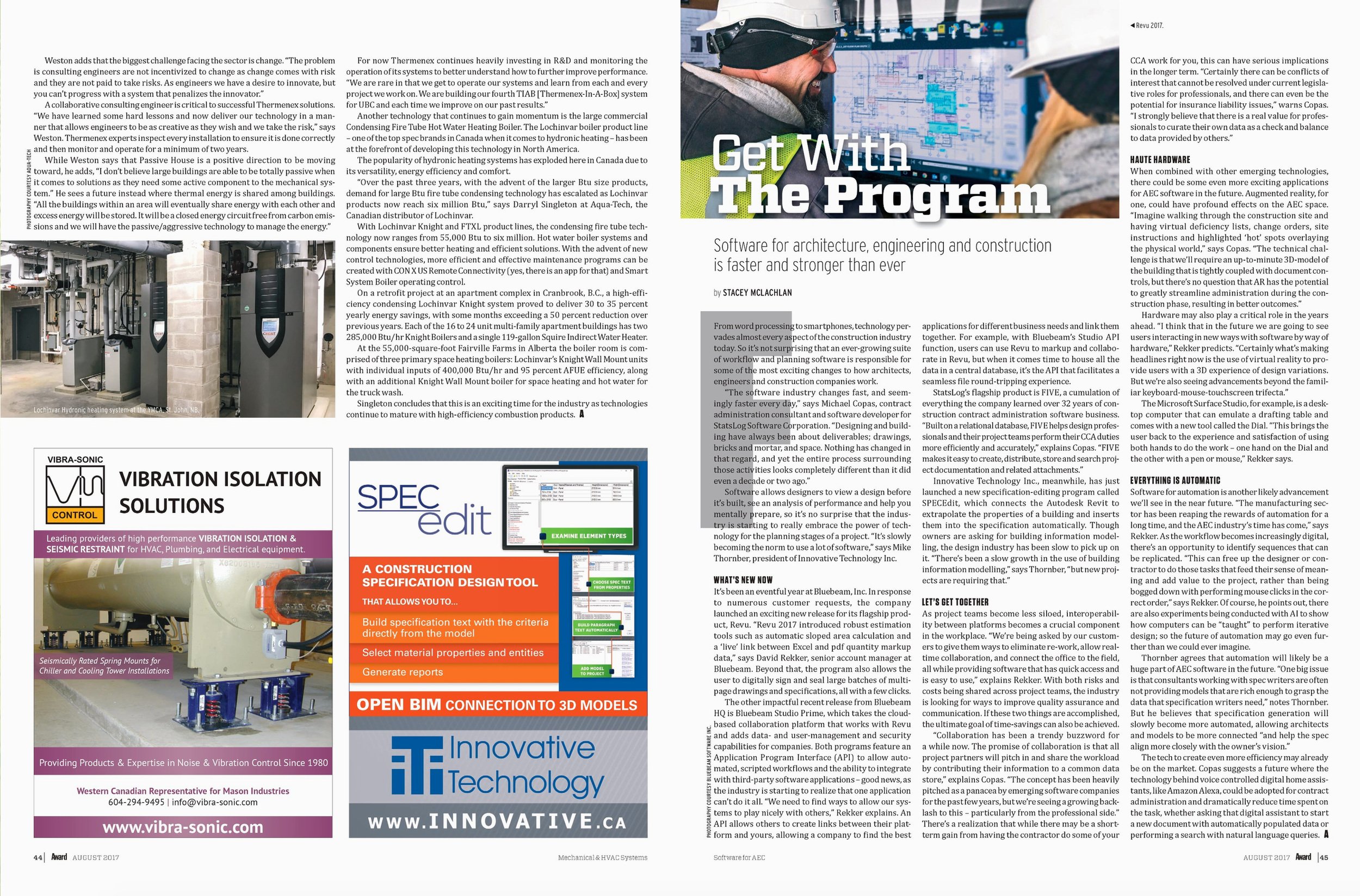Award Magazine: Get with the Program
August 1/17
by Stacey McLachlan
Statslog was featured in Award Magazine’s August 2017 issue covering software for architecture, engineering and construction—and how it’s faster and stronger than ever.
From word processing to smartphones, technology pervades almost every aspect of the construction industry today. So it’s not surprising that an ever-growing suite of workflow and planning software is responsible for some of the most exciting changes to how architects, engineers and construction companies work.
“The software industry changes fast, and seemingly faster every day,” says Michael Copas, contract administration consultant and software developer for Statslog Software Corporation. “Designing and building have always been about deliverables; drawings, bricks and mortar, and space. Nothing has changed in that regard, and yet the entire process surrounding those activities looks completely different than it did even a decade or two ago.”
Software allows designers to view a design before it’s built, see an analysis of performance and help you mentally prepare, so it’s no surprise that the industry is starting to really embrace the power of technology for the planning stages of a project.
What’s New Now
Statslog’s flagship product is FIVE, a cumulation of everything the company learned over 32 years of construction contract administration software business. “Built on a relational database, FIVE helps design professionals and their project teams perform their CCA duties more efficiently and accurately,” explains Copas. “FIVE makes it easy to create, distribute, store and search project documentation and related attachments.”
Let’s Get Together
With both risks and costs being shared across project teams, the industry is looking for ways to improve quality assurance and communication. If these two things are accomplished, the ultimate goal of time-savings can also be achieved.
“Collaboration has been a trendy buzzword for a while now. The promise of collaboration is that all project partners will pitch in and share the workload by contributing their information to a common data store,” explains Copas. “The concept has been heavily pitched as a panacea by emerging software companies for the past few years, but we’re seeing a growing backlash to this—particularly from the professional side.” There’s a realization that while there may be a shorter-term gain from having the contractor do some of your CCA work for you, this can have serious implications in the longer term. “Certainly there can be conflicts of interest that cannot be resolved under current legislative roles for professionals, and there can even be the potential for insurance liability issues,” warns Copas. “I strongly believe that there is a real value for professionals to curate their own data as a check and balance to data provided by others.”
Haute Hardware
When combined with other emerging technologies, there could be some even more exciting applications for AEC software in the future. Augmented reality, for one, could have profound effects on the AEC space. “Imagine walking through the construction site and having virtual deficiency lists, change orders, site instructions and highlighted ‘hot’ spots overlaying the physical world,” says Copas. “The technical challenge is that we’ll require an up-to-minute 3D-model of the building that is tightly coupled with document controls, but there’s no question that AR has the potential to greatly streamline administration during the construction phase, resulting in better outcomes.”
Everything is Automatic
The tech to create even more efficiency may already be on the market. Copas suggests a future where the technology behind voice controlled digital home assistants, like Amazon Alexa, could be adopted for contract administration and dramatically reduce time spent on the task, whether asking that digital assistant to start a new document with automatically populated data or performing a search with natural language queries.

